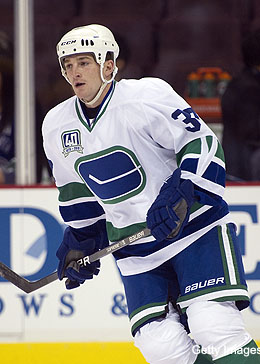We all want to protect our kids from childhood injuries, and street hockey equipment is a necessary part of sports safety.
Street hockey started about 40 years ago when kids began playing hockey outside on the pavement with roller skates instead of ice skates.
Today the game is played in basketball courts, blacktop rinks, tennis courts, playgrounds and yes, even streets. The roller skates of years ago have evolved into roller blades but the game is still the same. Kids play with hockey sticks to gain goals against the other team.
Street hockey has become a team sport of note, with tournaments played across the world.
Proper Street Hockey Equipment Prevents Injuries
As with regular ice hockey, street hockey injuries can happen.
The proper street hockey equipment can make all the difference when players meet hard. Everyone is familiar with the injuries common to ice hockey, and the same are possible with hockey played on roller blades.
Lost teeth, split lips, broken arms and legs, and even head injuries can be something your youngster may come home with. It's a very good idea to send your kids out with the proper gear in order to minimize, or even avoid, potential harm.
What is necessary street hockey equipment?
Street Hockey Equipment Must Include Head Protection
Just like ice hockey, street hockey play requires head protection. Helmets protect eyes, mouth and teeth, nose and head.
Both street and ice hockey use sticks to move the puck toward the goal, and these sticks can be dangerous, especially in the heat of play.
Kids are competitive, and they want to win. Sticks can be swung wildly and hard, and sometimes someone's head may just be in the wrong place at the wrong time. Head injuries from hockey can include serious things like concussion.
All players, and particularly goalies, must have head protection in order to prevent serious injury.
Street Hockey Equipment Includes Lots of Padding!
This will include other protective gear like pads, gloves and guards. Hockey pants, girdles and jerseys are available with padding form-fitted inside the garment to protect the player against injury from falls or hits.
This type of padded uniform is important because when a player falls on the pavement, blacktop surfaces can produce scrapes and gashes that can be very painful.
Choose a Street Hockey Wheel, Puck or Ball
Other gear essential to playing street hockey are the hockey sticks, goals and nets, inline skates, and hockey wheel (an alternative street hockey version of the ice hockey "puck") or puck. Either a hockey wheel or puck may be used for street hockey, as desired.
In addition, the Mylec company has developed a street hockey ball that has been designed to be used depending upon current weather conditions. This means that if your kids are playing street hockey in cool weather, Mylec has a specific hockey ball designed for 50 degrees, with other balls designed for warmer and cooler temperatures.
There are "quad" skates available as well, which are skates like you might use at your local roller skating rink. These skates have 2 wheels front and back instead of the more common inline skate, which has 4 wheels mounted in a straight line.
Street Hockey Equipment for Goalies
The goalie needs especially protective equipment because he is vulnerable to flying wheels or pucks as well as sticks. There are goalie packages available from several retailers that include all needed apparatus.
These packages will include special helmet/mask combinations that protect the goalie's face from flying hockey wheels as well as much thicker protective padding on legs, chest and shoulders.
Brand names of street hockey equipment include Mylec, Franklin, Vic, Tour and Koho.
Street Hockey Gets Kids Outside, Keeps Them Healthy and Happy
Street hockey is an excellent way for kids to develop confidence and self esteem as well as team spirit.
Exercise is beneficial for healthy and happy kids, and the proper street hockey equipment can make sure they stay safe in addition to having fun.
Article Source: http://www.articlesbase.com/home-and-family-articles/street-hockey-equipment-get-your-kids-outside-but-keep-them-safe-4326258.html
About the AuthorThis author really loves home and family, and lives life to the max. Do you also like to experience new things? Then feel free to read more at
Rapid City Restaurants
and
Ductless Heat Pump.
Grab The Bookmarketer For Your Site





